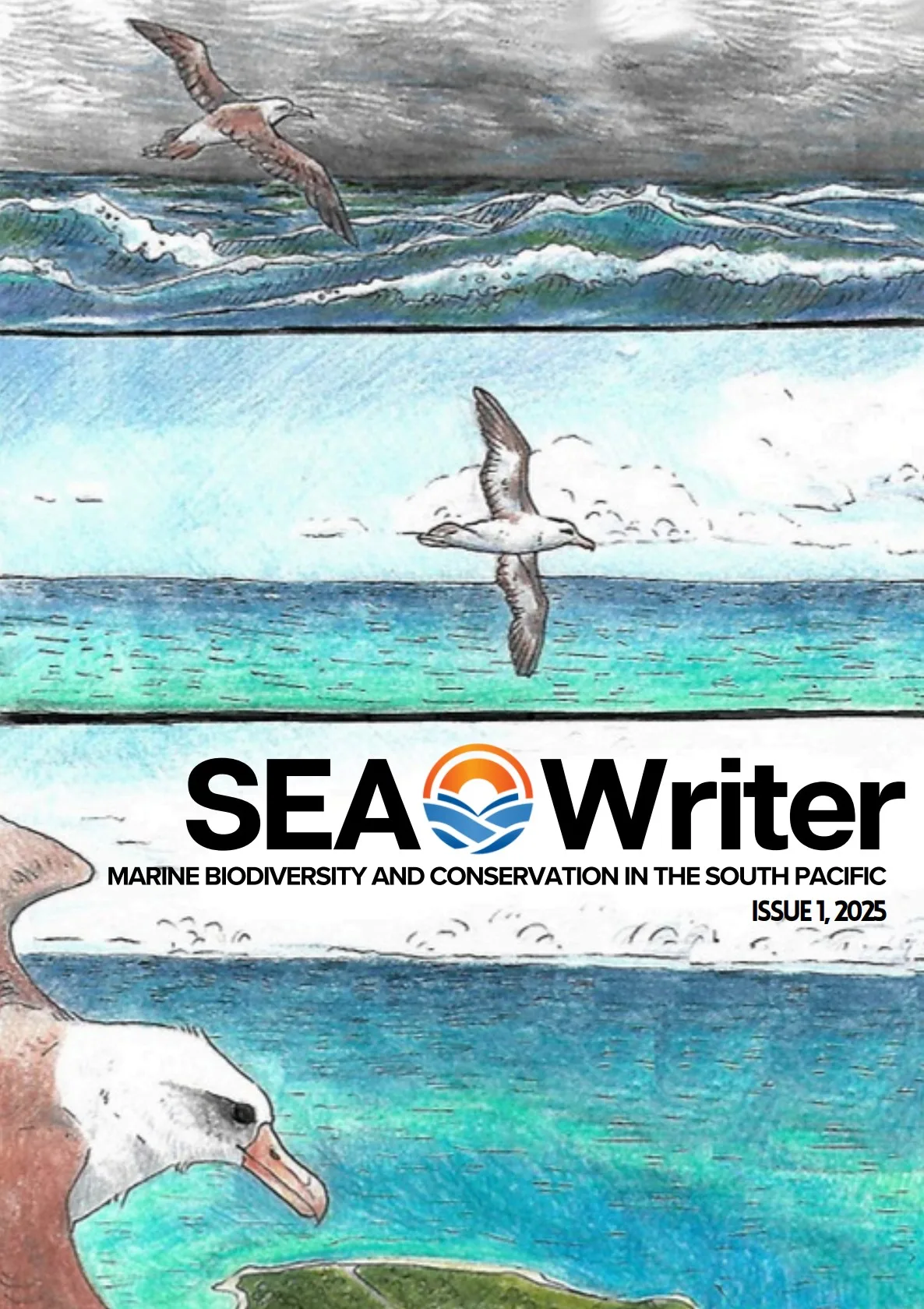News
SEAWriter: Marine Biodiversity and Conservation (Issue 1, 2025)

Introduction by Georgia Akins
There are no strangers here; Only friends you haven’t yet met.
– William Butler Yeats
When we are kids, we are told: “don’t talk to strangers.” While I agree with the safety of this precaution, I take nuance with its connotation of “strangers.” The phrase has a tendency to antagonize new people, instilling fear for the unknown. As we get older, however, it becomes clear that growth often begins with unfamiliar conversations. For how will we learn anything new if we don’t talk to strangers?
When the seventeen authors of this magazine met on a sunny February afternoon in Woods Hole, MA, USA, we were strangers to each other. Little did we know, our lives would become inextricably intertwined from the experience of a lifetime. That day, we became the Sea Education Association’s class of S-321.
S-321 is a class of thinkers, dreamers, and doers. Drawn from all over North America, we decided to expand our educational horizons, sailing and conducting oceanographic research for a semester abroad. As part of SEA’s Marine Biodiversity and Conservation (MBC) program, we began our studies in Woods Hole, MA, USA, where we got our footing for the foreground of our research, sail theory, and each other. A month later, we found ourselves on a dock in Lyttelton, Aoetearoa New Zealand, where we joined the crew of the SSV Robert C. Seamans. For the next six weeks, we would live and work aboard the Seamans, traversing the vast South Pacific Ocean. For five of those weeks, we would go without seeing land or anyone else outside of the thirty-four-person crew. Just us and the open ocean.
For some MBC cruise tracks, this time away from civilization could be longer. Fortunately and unfortunately for us, our nautical journey was sped up as a result of considerably intense weather. Twenty-foot seas and forty-five knot winds propelled us northward to French Polynesia, where we were rewarded with a week of island-hopping. From Tahiti to Bora Bora to Raiatea and eventually, Mo‘orea, we reveled in the calm waters and creature comforts of land for the first time in what seemed like forever.
The last leg of our program consisted of what SEA considers to be finals week: two weeks ashore at UC Berkeley’s Gump Station in Mo‘orea. As relaxing as it might sound, we were kept busy– writing manuscripts, visiting local organizations, practicing presentations, preparing our goodbyes –it was definitely not a vacation. In fact, vacation is the last term I would use to describe a semester with SEA. And that’s not necessarily a bad thing.
During the lowest of the lows, we would sometimes say: “Some people just go to Italy.” And this is not to discredit the rigor of any semester abroad, but some people do in fact just go to Italy. They can wake up and go to sleep at reasonable times, shop and go out, explore land at will. We all could have chosen to go to Italy for a semester, and yet, we all chose SEA. We sought a challenge. Often ashore and at sea, MBC was accredited to being one of the most difficult cruise tracks; mentally, physically, and emotionally. For that very reason, in the words of our Captain Rick Miller, it is “one of the best cruise tracks.” This may only have been my first trip with SEA, but I couldn’t agree more. We had the unique opportunity of going where not many people can fathom of going: a truly remote corner of the world. The amount of perspective that this gives you about the planet, community, yourself, is simply incredible.
In the world of science, perspective is critical. Acknowledging our own biases and reservations is especially important in the context of the open ocean. Beyond national jurisdiction of any sort, the high seas are an oft under researched and under-appreciated resource that cover the majority of the Earth’s surface. Naturally, the scientific instinct is to sample and study at will. But like the rest of the planet, the open ocean holds immense environmental, social, and cultural value that must be considered. As students with SEA, we are no stranger to looking at the broader picture. In Woods Hole, a variety of classes conditioned us to think beyond our research niches. Such courses included: Advanced Topics in Biological Oceanography, Ocean Science and Public Policy, and Environmental Communication. Both independently and together, these courses framed the titular focus of our program: Marine Biodiversity and Conservation.
It is under this focus that we wrote this magazine. Here, we present a compilation of science journalism, policy briefs, blog entries, poetry, partner profiles, and artistic expression to share our experience with friends, strangers, the world. It is our intent that you, dear reader, take at least one new piece of knowledge to heart. And if that knowledge comes from a stranger, then even better. For listening and talking to strangers isn’t just how stories start, it’s how we grow.
About SEAWriter
SEAWriter is a student-published magazine, usually created as part of SEA’s Environmental Communications course. Each edition features articles, creative writing, and artwork contributed by program students and faculty. Environmental communication is essential in raising awareness, inspiring action, and bridging the gap between science and society. SEAWriter serves as a culmination of everything students have learned in all their courses and research as well as their field component. Through storytelling and visual expression, students apply their knowledge and creativity to effectively convey environmental messages to a broader audience.
To explore past issues of Sea Writer, visit our ISSUU page: https://issuu.com/sea_semester